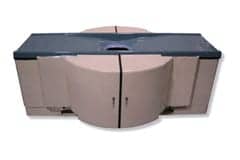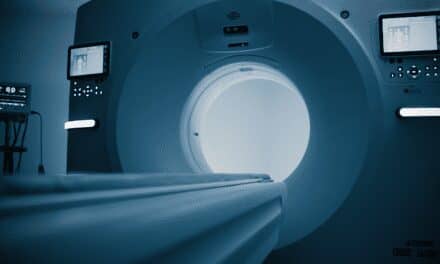Using activity based methods to justify capital equipment.

|
Historically, equipment justification centered on the principle that the “squeaky wheel gets the grease.” Although this approach hasn’t entirely disappeared, today’s reimbursement environment has forced hospital and freestanding clinic executives to more carefully analyze the financial impact of such purchases. Given the recent investments made by the health care industry to enhance their financial information systems, one would believe that justifying capital purchases is a simple task. Unfortunately, most radiology and finance executives would agree that their current financial systems’ output simply does not offer enough detailed information to determine the Return On Investment (ROI) for sizeable capital purchases.
The problem with the current approach stems from the use of standard cost accounting and overhead allocations that tend to be arbitrary. Cost systems today try to identify the standard cost for a charged procedure, but negate all of the activities and cost incurred in support of the actual procedure. These other costs are dealt with through arbitrary allocations that distort the actual cost of performing a procedure or test. Further exacerbating the problem is the actual cost of the capital equipment itself. Traditionally, most organizations simply allocate all depreciation across all revenue departments, which means that the actual cost of the equipment being used is only partially included in the numbers used in this ROI.
In order to obtain this detailed information, Mercy Hospital in Miami chose to implement an activity-based system in both the radiology and laboratory departments. The goal was to capture the “true cost” of the procedures they perform in both their inpatient and outpatient centers.
Activity-based methods consist of both Activity-Based Costing (ABC) and Activity-Based Management (ABM). ABC is a cost-management approach that links resource consumption to activities that a department performs, and then assigns those activities and their costs to customers, products, or product lines. ABM uses the resource assignments derived in ABC and identifies the “cost drivers,” which allow an operational manager to identify opportunities to improve departmental processes and workflows to lower cost, improve throughput and quality, and improve profitability. Mercy Hospital selected the ExactCost system because most of the activities performed in radiology were predefined in the application and required minimal customization, which reduced implementation time. Using the ExactCost activity-based solution, we were able to determine the “true” cost of every radiographic procedure today and on an ongoing basis.
As we set out on our goal to determine the feasibility of acquiring a new 64-slice CT scanner for the emergency department (ED), the finance department agreed to use the ExactCost system to analyze the cost of all our CT scans by CPT code, and project the cost of using the new 64-slice CT scanner. Currently, all ED CT scans are being performed in the inpatient radiology department, located on the second floor of the hospital.
The level of detail captured by the ExactCost ABC system allowed us to evaluate the following:
- Historical volumes of inpatient and ED CT scans.
- Projected volumes for inpatient and ED CT scans (growth trends).
- Type of CT scans performed in the ED.
- Potential impact on volume in the inpatient and the ED with an additional CT scanner.
- The cost of transporting patients from the ED to the inpatient radiology department.
- Reimbursement rates in the ED (we were able to determine that our APG rates represented a good proxy for inpatient reimbursement as well).
- Payor mix and actual payments in both the inpatient and ED (Medicare, Medicaid, Commercial Insurance, and Bad Debt).
- Number of procedures per discharge.
- Current and potential capacity.
- Impact on maintenance costs and downtime for the existing CT scanner.
- Current and future staffing requirements.
Having an activity-based system gave us the ability to determine which activities could be eliminated or added, and which activities would change. We were also able to determine the cost of labor and supplies for the new scanner and, more important, the actual cost of depreciation for the new equipment and the facility that would house the new equipment. The detailed activity dictionary also gave us the ability to determine the impact on the existing inpatient operations, particularly the impact on labor cost, since we would no longer require the same level of staffing on the second and third shifts, which primarily supported the ED. In order to complete the justification, we needed to make several assumptions that were simplified because of the support of the ED physicians and staff. One assumption included the projected volume and type of procedures we expected over a 5-year horizon. Another assumption related to the cost of maintenance, which had become problematic for the existing CT scanner because of the nearly 100% utilization.
Since the increase in volume was projected as high as 30% per year by most of the physicians, we modeled the justification using four different projections starting at a 4.5% increase in annual volume to a 30% increase in annual volume.
The majority of the data needed to complete the justification resided in the ExactCost database with the exception of the ED cost and volume, because the ED had not implemented the ExactCost system at the time we performed this analysis. We added the ED data manually to complete the model.
The results of our analysis concluded that a new ED CT scanner would produce an internal rate of return of 103% and payback over a period of 17.3 months. Using the activity-based methodology provided us with a very detailed analysis centered on activities at a procedural level.
Having an integrated activity-based system has provided Mercy with an ongoing level of detail that enhances our daily operation, including budget preparation, capital equipment expenditures, procedural cost containment, and enhanced services.
Kevin Gregory, RT, is the director of radiology Services at Mercy Hospital, Miami. He has been with Mercy Hospital for 33 years and is responsible for inpatient diagnostic imaging. For more information, contact .
Paul H. Monge, CRA, is vice president of clinical specialists at ExactCost Inc, Hallandale Beach, Fla. For more information, contact .






